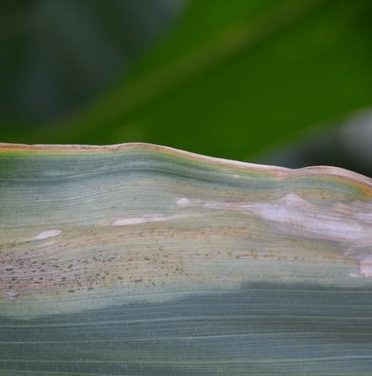
Similar to Stewart’s wilt, this bacterial disease has two phases. The first appears early in the season and is characterized by orange to brown discoloration of diseased vascular tissues and may result in the wilting and death of the young plants. Phase 2 begins in mid season when gray-green water-soaked streaks with wavy margins appear. The streaks may be accompanied by smaller, darker, water-soaked lesions that are translucent when held up to the light and may ooze bacteria filled droplets in the morning. The lesions fade to tan with time. These symptoms resemble those caused by other factors such as drought, nutrient deficiency, and fungi so may be difficult to identify with certainty. The cause of Goss’s wilt is the bacterium Clavibacter michiganensis subsp. nebraskensis, that overwinters in crop residue and enters plants through wounds. The disease can spread from plant to plant by splashing of rain or irrigation water from ground to plant, and from field to field by movement of crop residue. Photo Credit BugwoodWiki
Control:
- Remove infected plants immediately and dispose of them to reduce the spread of the bacteria.
- Wash tools, hands, and clothing that may carry the disease.
- Crop rotation with plants in other plant families
- Reduce above ground crop residual by removal or burying
- Use resistant varieties
- Remove grasses as they can be reservoirs of the causative bacteria